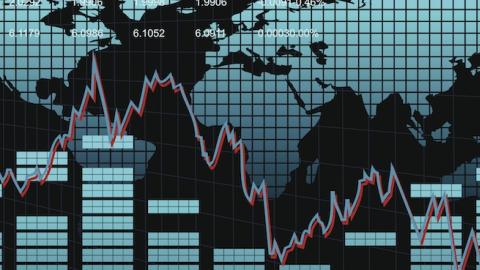President Obama's High Command at the Fed has had the luck which Napoleon looked for in his generals. The exercise of two Yellen puts seems to have delayed the late dangerous stage of asset price inflation to beyond 2016 Election Day.
Growing evidence and diagnostic power supports the view that the asset price inflation disease now afflicting the global economy is a historically rare form albeit also present in the last decade. President Bush, however, did not appoint lucky Fed generals. The Great Panic and Recession arrived before 2008's Election Day.
The Two Types of Asset-Inflation Disease: Depression vs. Boom
Four episodes of asset price inflation since the mid-1980s (when Paul Volcker abandoned his "hard money" policy) have added importantly to the available data on the asset-price-inflation disease. The hypothesis has become plausible that asset price inflation, always of monetary origin, comes in two distinct types rather than just one.
The first and best known is the boom-type (type A) and includes examples such as 1924-9, 1962-8, 1985-9, 1995-2000. The second is the depression-type (type B) and includes 1934-7, 2003-7, and 2010-?. Type B is comparatively modern, stems from radical monetary experimentation, accompanies continuing economic weakness and has an end phase which can be more deadly than that of type A.
Both types of asset price inflation are characterized essentially by out-of-control money empowering irrational forces in financial markets. The flawed mental processes documented by behavioral finance theorists gain prominence in market price determination and so the signals which guide the invisible hands become highly distorted.
The disease passes through several stages including a late-mid phase when speculative temperatures are already falling sharply in some areas while still rising elsewhere. In the final stage there is a widespread crash across financial markets and the onset of recession. Beyond those common features there are five important differences.
Five Differences Between the "Depression Type" of Asset Inflation and the "Boom Type"
Number One: Views of the Future Diverge
In type B (depression) asset-price-inflation disease, investors afflicted by the interest income famine exhibit an irrationally strong inclination to gamble. This is consistent with Daniel Kahneman's observation (in his book Thinking Fast and Slow) that if individuals are faced with certain loss, they assume bets which offer some prospect of avoiding the loss even if the overall expected outcome (probability weighted) is substantially negative. The certain loss looms due to zero or negative interest rate policies combined with the expectation of rising prices for goods and services in general. It is possible that the desperate investors pretend to themselves that the bad bets are in fact good bets, dropping their normal skepticism to the speculative stories which are driving asset price rises.
In type A (boom) asset-price-inflation disease, the key mental flaw is the positive feedback loop. In this mode of thinking, investors, whose greed has been fuelled by high returns amidst good economic outcomes, take these (returns) as further confirmation of the bullish speculative hypotheses which are circulating for a range of asset classes. The high returns have been bolstered by the central bank pursuing policies which likely depress market interest rates well below neutral level.
Number Two: The Timing Is Different
Type B asset-price-inflation disease develops typically early on in the business cycle and persists throughout, while type A emerges later in the cycle. Type B starts with the announcement of a Great Monetary Experiment. There is enough hope and positive expectation around (including prospects for the success of the experiment) to incite a Hunt for Yield. Type A starts when economic confidence is already high.
Number Three: The Problem Is Obvious
The monetary distortions which lie at the root of asset-price inflation are much more evident for type B than type A. The asset price inflation (type B) in the US from 1934-7 was led by the Roosevelt's "Monetary Experiment." This phase was characterized by devaluation, monetization of huge gold inflows (once the official dollar price of gold was re-fixed and funds fled the crumbling European gold bloc), short-term rates fixed at zero, and manipulation of long-term interest rates. Everyone and their dog could recognize exactly what was going on. The same was true of the "breathing in inflation" policy of the Greenspan-Bernanke Fed from 2003-6 and its tools of a glacial staged rise of short-term interest rates. And now we have the Great Monetary Experiment.
As Milton Friedman observed, when everyone knows inflation (goods and services) is happening, it fails to stimulate. The same is true of asset price inflation. Type A - which infects the economy unannounced and widely unrecognized -- might well cause the economic boom to be larger than otherwise. The type B infection by contrast could mean a weak economic expansion becomes even weaker as everyone is so aware of the disease and its likely bad end phase. Businesses conclude the way to higher equity valuations is to pay out cash and leverage up for that purpose rather than investing in long-gestation projects.
Number Four: Motivations Behind the Carry Trade Are Different
Carry trades flourish under both types of asset-price inflation. But,there is one key difference and the motivations are distinct.
The three big carry trades common to both types are from low yield currencies to high-yield currencies, from low-risk credits to high-risk credits, and from liquid into illiquid assets. Under type A disease, the carry traders become over-confident in a stream of high returns bolstered by the general mood of optimism. As a result, they overestimate the likely exchange-risk premiums, credit-risk premiums, and liquidity premiums that they are likely to earn.
Under type B, desperation for yield lies behind the overestimation.
The fourth form of carry trade is funds shifting from short-maturity, high-quality government bonds to long-maturity ones. This is done amidst widespread overestimation of the expected "term premium" (extra income compared to rolling over short-maturity bonds), and is found only under the type B disease. In the economic boom which coexists with type A, long-maturity low yield government bonds are hardly likely to excite any enthusiasm. Extraordinarily low long-term rates -- generated by speculative hypotheses of secular stagnation and new powers of central banks to manipulate long-term rates -- are a feature of type B. In turn, these low yields appear to justify the sky-high valuations in other risk markets.
The "long-term interest rate bubble" is a serious hazard unique to type B disease. Greenspan and Bernanke blamed artificially low level of long-term interest rates in the mid-2000s on the Asian savings surplus. In fact, this was a symptom of the type B asset price inflation which their policies had created.
Number Five: Inflation in Prices for Goods and Services
An accelerating inflation of prices for goods and services is a characteristic of late stage type A asset price inflation - reflecting a monetary stimulated boom in demand which outstrips supply. But this is not the case with type B. In principle, such inflation should be measured by comparing actual price behavior with the natural rhythm of prices which would pertain under a sound money regime. (This would be downwards during periods of rapid productivity growth as in the technology driven booms of the mid-1920s, mid-1960s, or mid/late 1990s.)
Both types of asset-price inflation have bad economic outcomes. But there is no ground from historical experience to suggest that type B is likely to be less devastating in the end. Under type A, there is at least some economic cushion left over from the years of plenty (albeit amidst considerable over-investment and mal-investment). On the other hand, the bond bubble under type B not only aggravates the bust's hazards, but may also directly contribute to a growth of Big Government which proves irreversible.
















